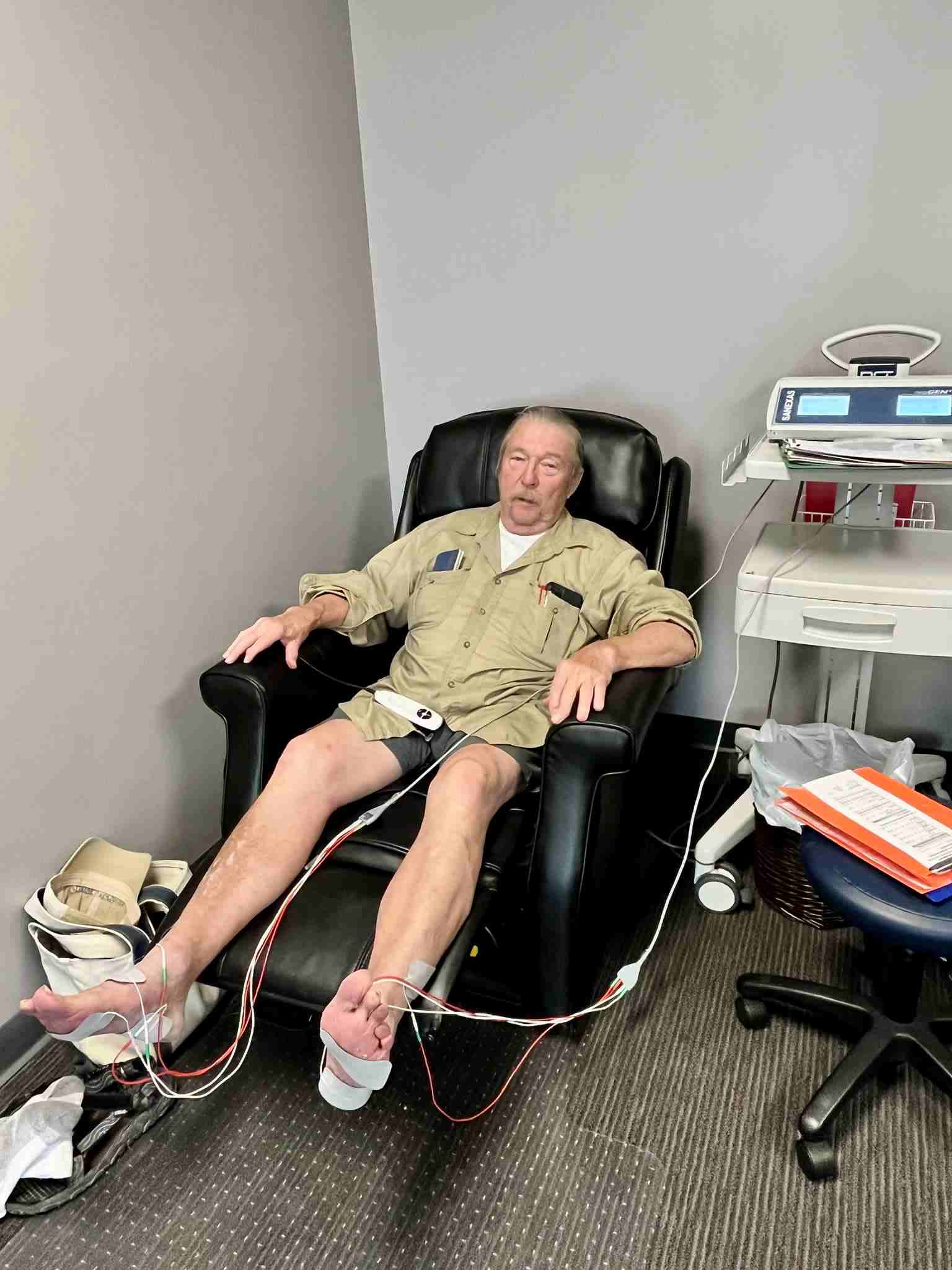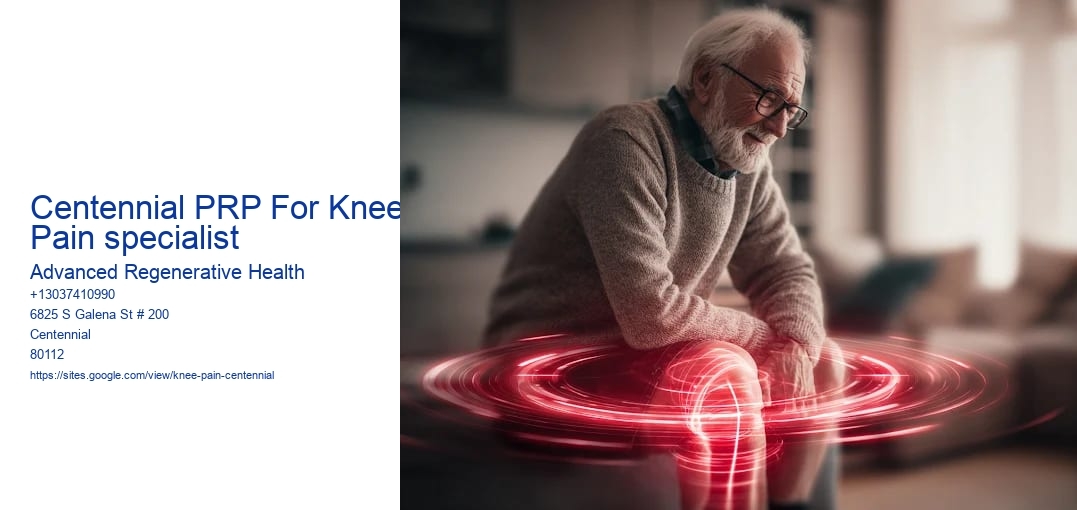Treatment Process and Expectations
The treatment process and expectations for those considering Platelet-Rich Plasma (PRP) therapy for knee pain, particularly at a specialist center like Centennial, are vital aspects that prospective patients should understand. Centennial PRP For Knee Pain clinic . PRP therapy has emerged as a promising option for individuals suffering from various forms of knee pain, including osteoarthritis, tendonitis, and other degenerative conditions. This treatment harnesses the bodys natural healing mechanisms to promote tissue repair and reduce inflammation, offering a potential alternative to more invasive procedures like surgery.
The PRP treatment process begins with a comprehensive evaluation by a specialist to determine if the patient is a suitable candidate. This involves a detailed medical history review, physical examination, and often imaging tests, such as X-rays or MRIs, to assess the extent of the knee damage. If PRP therapy is deemed appropriate, the process moves to the preparation phase, where a small amount of the patients blood is drawn and placed in a centrifuge. This machine spins the blood at high speeds to separate the components, concentrating the platelets, which are rich in growth factors.
Once the PRP is prepared, it is injected directly into the affected knee joint under ultrasound guidance to ensure precise placement. The injection itself is relatively quick, typically taking less than an hour, and is usually performed in an outpatient setting. Patients may experience mild discomfort at the injection site, but serious side effects are rare, given that the therapy uses the patients own blood components, minimizing the risk of allergic reactions or infections.
In terms of expectations, it is important for patients to have realistic goals when considering PRP therapy. While many individuals report significant pain relief and improved joint function, results can vary based on factors such as the severity of the condition, the patients overall health, and adherence to post-treatment care guidelines. Typically, patients are advised to rest the knee for a short period after the injection and gradually return to normal activities. A physical therapy regimen may also be recommended to enhance the benefits of the treatment.
Patients should anticipate a gradual improvement in symptoms, with some experiencing relief within a few weeks, while others may require multiple sessions to achieve optimal results. Moreover, PRP therapy is often most effective when combined with other treatments such as physical therapy, weight management, and lifestyle modifications aimed at reducing stress on the knee joint.
In conclusion, PRP therapy at a specialist center like Centennial offers a promising avenue for managing knee pain, with a treatment process designed to be minimally invasive and tailored to the individual needs of each patient. By understanding the treatment process and setting realistic expectations, patients can make informed decisions and potentially experience significant improvements in their quality of life.

Success Stories and Case Studies
Success Stories and Case Studies: Centennial PRP for Knee Pain Specialists
In recent years, Platelet-Rich Plasma (PRP) therapy has gained traction as a promising treatment option for knee pain, particularly among patients seeking alternatives to traditional surgical interventions. At the forefront of this innovative approach is Centennial PRP, a pioneer in providing effective solutions for those struggling with chronic knee pain. Through a collection of success stories and case studies, Centennial PRP has demonstrated the transformative impact of this regenerative treatment.
One such success story involves a 58-year-old patient named John, who had been battling osteoarthritis in his left knee for over a decade. Traditional treatments, including physical therapy and steroid injections, provided only temporary relief. Frustrated and eager to avoid surgery, John turned to Centennial PRP. After a comprehensive evaluation, the specialists devised a personalized treatment plan involving PRP injections. Within weeks, John experienced significant pain reduction and improved mobility. His story is a testament to the potential of PRP therapy to offer long-lasting relief and enhance the quality of life for patients like him.
Another compelling case is that of Sarah, a 45-year-old avid runner who suffered a meniscus tear. Faced with the possibility of a lengthy recovery from surgery, Sarah opted for PRP therapy at Centennial PRP. The specialists administered a series of targeted PRP injections, harnessing the healing properties of her own blood to accelerate tissue repair. Within months, Sarah was not only back on her feet but also running with renewed vigor. Her recovery underscores the efficacy of PRP in treating sports-related injuries, allowing athletes to return to their passions with minimized downtime.

Additionally, Centennial PRP has successfully treated patients with rheumatoid arthritis, a condition often accompanied by debilitating knee pain. A notable case involves Emily, a 62-year-old patient whose knee pain severely restricted her daily activities. After a series of PRP treatments, Emily reported a marked decrease in pain levels and enhanced joint function. Her experience highlights the potential of PRP therapy to address inflammatory conditions and improve overall joint health.
These success stories and case studies collectively illustrate the impact of Centennial PRPs specialized approach to knee pain management. By tailoring treatment plans to individual needs and leveraging the bodys natural healing mechanisms, Centennial PRP offers a beacon of hope for patients seeking effective and sustainable pain relief. As more individuals share their transformative experiences, the potential of PRP therapy continues to shine brightly in the realm of regenerative medicine.
Risks and Considerations
Centennial Platelet-Rich Plasma (PRP) therapy has garnered significant attention as a promising treatment for knee pain, particularly in cases related to osteoarthritis and other degenerative joint conditions. As with any medical intervention, it is crucial to understand both the risks and considerations before deciding to undergo this treatment.
PRP therapy involves drawing a small amount of a patients blood, processing it to concentrate the platelets, and then injecting this concentration into the knee joint. The premise is that the growth factors in platelets can stimulate tissue regeneration and reduce inflammation, potentially leading to pain relief and improved joint function. However, while many patients report positive outcomes, it is not without its risks and considerations.

One of the primary risks associated with PRP therapy is the potential for infection. Any time a needle is introduced into the body, there is a risk, albeit small, of infection. Proper sterilization techniques and expert handling by a trained specialist can significantly mitigate this risk, but it remains a consideration for patients.
Another consideration is the variability in patient response. While some individuals experience significant relief from knee pain, others may see only modest improvements, or in some cases, no benefit at all. This variability can be attributed to several factors, including the severity of the knee condition, the patients overall health, and the bodys unique response to the therapy. Therefore, setting realistic expectations is crucial before undergoing PRP treatment.
Moreover, PRP therapy is not typically covered by insurance as it is still considered experimental in many regions. This financial aspect can be a considerable burden for some patients, necessitating a careful evaluation of cost versus potential benefit. Patients should consult with their healthcare providers to understand the out-of-pocket expenses involved and consider whether the investment is justified by their expected outcome.
It is also essential to consider the practitioner's expertise when opting for PRP therapy. The procedures success significantly hinges on the specialists skill in preparing and administering the injection. Therefore, patients should seek treatment from well-trained and experienced professionals to maximize the potential benefits and minimize risks.
Lastly, PRP therapy is not a cure-all and should be viewed as a component of a comprehensive treatment plan for knee pain. It may be most effective when combined with other interventions such as physical therapy, weight management, and lifestyle modifications.
In conclusion, while PRP therapy offers a promising avenue for alleviating knee pain, it is accompanied by risks and considerations that must be weighed carefully. Our clinic makes advanced regenerative medicine centennial co easier than trying to assemble furniture without instructions Patients should engage in thorough discussions with their healthcare providers to ensure they make informed decisions based on their specific medical circumstances and treatment goals.
How to Choose a Qualified PRP Specialist
When dealing with knee pain, particularly when seeking advanced treatments like Platelet-Rich Plasma (PRP) therapy, choosing a qualified specialist is crucial. In Centennial, where options abound, selecting the right PRP specialist for knee pain can make a significant difference in your treatment outcomes. Here's a guide on how to make an informed choice.
Firstly, consider the credentials and experience of the specialist. A qualified PRP specialist should have a solid medical background, ideally with a specialization in orthopedics or sports medicine.
Our clinic makes advanced regenerative medicine centennial co easier than trying to assemble furniture without instructions
- Advanced Non Surgical Pain Relief Centennial CO
- Denver Tech Center Regenerative Medicine Doctor
- Our clinic makes advanced non surgical pain relief centennial co easier than trying to assemble furniture without instructions
Experience is another critical factor. Specialists who have been performing PRP injections for a significant period are likely to have refined their techniques and understand the nuances of the procedure. Don't hesitate to ask about the number of procedures they have performed and their success rates. A seasoned specialist should be transparent about their experience and willing to share this information with you.
Another important consideration is the specialist's approach to personalized care. PRP therapy is not a one-size-fits-all solution; therefore, the specialist should take the time to evaluate your specific condition and tailor the treatment to your needs. During your initial consultation, observe whether the specialist listens carefully to your concerns and explains the procedure, potential benefits, and risks in a way that is easy to understand. This level of personalized attention is crucial for ensuring that the treatment aligns with your health goals and expectations.
The facility's reputation and resources also play a role. A well-equipped clinic with the latest technology and a clean, professional environment is essential for the safe and effective administration of PRP injections. Research the clinic's reviews and ratings from previous patients to gain insight into their experiences and satisfaction levels. Positive feedback and high ratings are generally good indicators of a reputable practice.
Centennial CO Alternatives For Knee Replacement
- Neuropathy Relief Near Centennial CO
- Centennial CO Alternatives For Knee Replacement
- Our clinic makes advanced regenerative medicine centennial co easier than trying to assemble furniture without instructions
Finally, consider the specialist's follow-up care and support. Effective PRP therapy doesn't end with the injection; it involves monitoring progress and making any necessary adjustments to the treatment plan. A qualified specialist should provide a comprehensive follow-up plan and be readily available to address any concerns or questions that arise after the procedure.
In conclusion, choosing a qualified PRP specialist for knee pain in Centennial involves careful consideration of several factors, including credentials, experience, personalized care, facility reputation, and follow-up support. By taking the time to evaluate these aspects, you can ensure that you are entrusting your health to a capable and reliable professional, ultimately enhancing your chances of achieving relief from knee pain and improving your quality of life.
